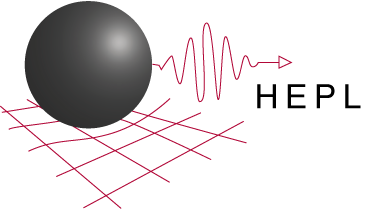News & Events
HEPL-AEROASTRO Seminar
Wednesday April 6, 2011
James Chen
Plasma Physics Division
Naval Research Laboratory
Physical Relationship Between CME Acceleration
and Flare Energy Release
Abstract: The physical connection between the acceleration of coronal mass ejections (CMEs) and associated flare energy release is examined from both theoretical and observational points of view. The trajectories of CMEs are determined using LASCO/SOHO or SECCHI/STEREO data, and the associated soft X-ray (SXR) light curves are obtained from GOES 1-8A data.
For the theoretical description of CME physics, the existing erupting flux rope (EFR) model is used. In this model, an initial flux rope is driven out of equilibrium by the increasing poloidal magnetic flux F(t) ("poloidal flux injection"). Mathematically, this is represented by dF(t)/dt. Physically, this produces an electromotive force (EMF) that can accelerate particles to X-ray energies. For the work discussed here, the observed CME trajectory (position time)data are used as the sole observational constraint on the model equations.
For each CME, the dF(t)/dt function is adjusted to obtain the solution that best fits the input CME data. The resulting dF(t)/dt is found to be strongly constrained by the longtime CME trajectory. It is shown that the best fit initial value solution agrees with the CME data to within 1-2% (throughout the 1 AU FOV when observed by STEREO) and that the temporal profile of the predicted dF(t)/dt is closely correlated with that of the associated SXR light curve regardless of the flare duration.
In a few cases where the CME eject as were directly intersected by an observing spacecraft at 1 AU, the magnetic field predicted by the best fit solution was found to be in good agreement with the in situ data. Neither the input CME height data nor the dF(t)/dt function contains any information on X-ray data. Thus, the correlation is nontrivial, constituting evidence that poloidal flux injection is physically connected to flare energy release. It is suggested that this connection is provided by the EMF.
The poloidal flux injection function allows two generic physical interpretations as to its source: (1) coronal source or (2) subphotospheric source. The basic physics and observational issues pertaining to these interpretations, particularly the possible signatures, are discussed. I will also discuss how the EFR model equations extract the correct X-ray emission time scale and magnetic field at 1 AU from the CME height data.
Bio: (coming soon)
Time: 4:00pm – 5:30pm
Location: Physics and Astrophysics Conference Room 102/103
Light refreshments available 4:00pm; Presentation begiins 4:15pm
Open to All


